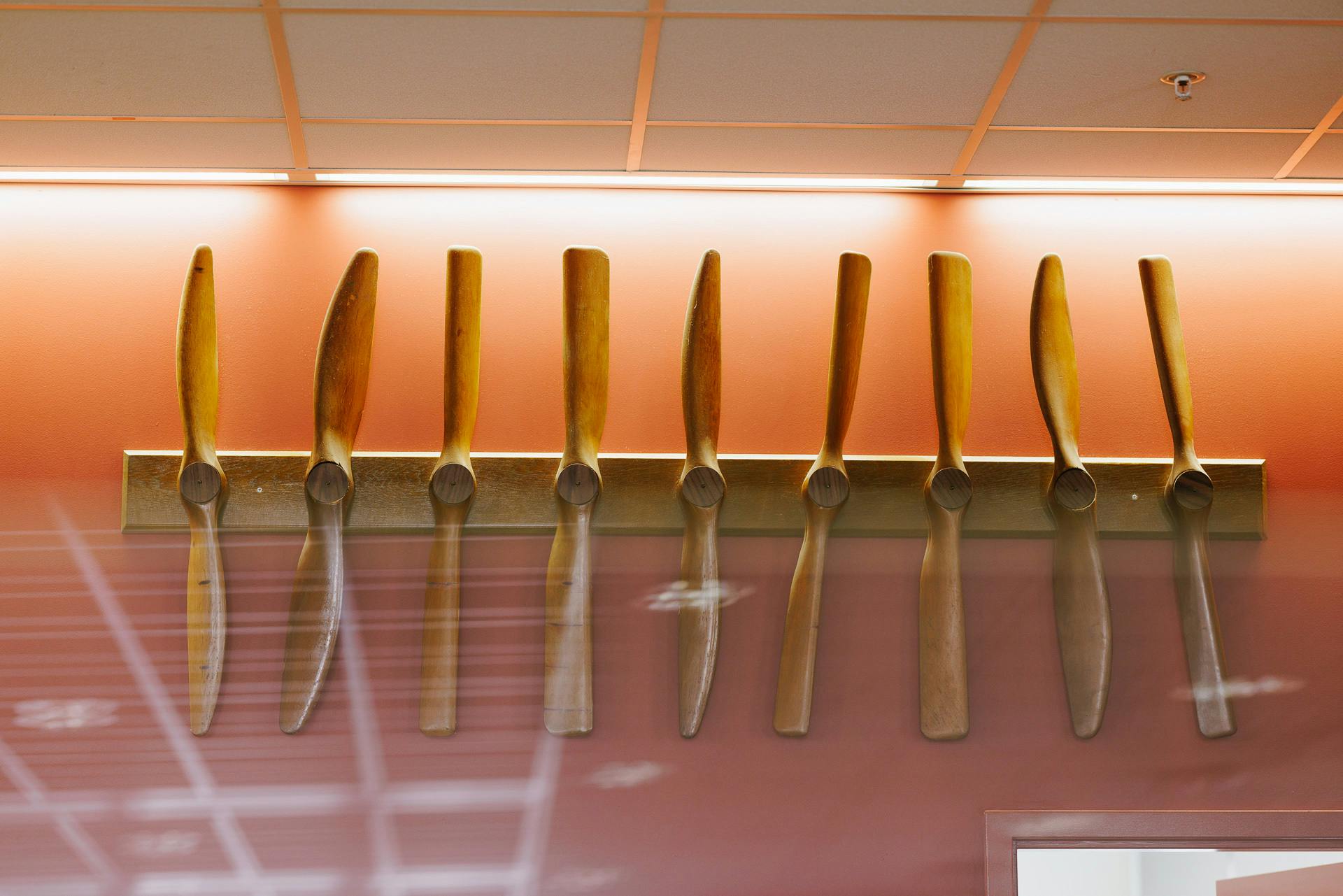
The Durand-Lesley propellers in the Terman Library are the surviving artifacts of a famous experiment in early aviation history which defined a process method in engineering research still in use today.
The work created a comprehensive methodology that was widely used by engineers but little studied by historians, until Walter G. Vincenti wrote about it as a case study in his book, “What Engineers Know and How They Know It: Analytical Studies from Aeronautical History” (1993).
The studies at Stanford systematically altered parameters that defined the shape of propeller blades and two other items, the speed of the airstream and the speed of propeller rotation, to determine the best performance of various propeller shapes.
The history of aeronautics at Stanford began long before the actual founding of the Aeronautics Department and is almost as old as the university itself. It all started with the appointment of William F. Durand in 1904 to the chairmanship of the Department of Mechanical Engineering, only a year after the first flight of Wilbur and Orville Wright.
William F. Durand (1859-1958), for whom one of our campus buildings is named, ranks among Stanford's most distinguished faculty. His first professional assignment upon graduation from Annapolis was as engineering officer on the U.S.S. Tennessee, a full-rigged wooden ship with auxiliary steam power; his last was as chairman of the government committee responsible for the development of jet engines. He died the year after Sputnik was launched at age 99.
Throughout his long career he was a leader in naval architecture, hydraulics, and aerodynamics, helping to bring about the transition of American engineering from an empirical, cut-and-try activity to its present-day, physically understood, scientifically based endeavor.
Aircraft propeller design became vitally important in World War I. Durand and his associate Everett “Bill” Lesley tested propeller designs at Stanford from 1916 to 1926 in a small wind tunnel they constructed on the campus, under a $4000 contract to NACA (National Advisory Committee for Aeronautics, now NASA). The result of their research was a large catalog of propeller data used by aircraft engineers for many years.
The data they produced enabled designers to improve their ability to match the design of the propeller with engine and airframe designs. The results of their work had even more impact after the 1930’s when it became possible to vary propeller pitch during flight.
Durand and Lesley tested 125 propellers designed in families that varied by blade twist and other aerodynamic shape characteristics. The propellers were on display at the Smithsonian for a time during the 1950's. The collection was also mounted on the wall of the wind-tunnel laboratory. That building no longer exists. Fifty of the propellers are currently on permanent display in the Terman Library in the Huang Engineering Center.
The back of each propeller is numbered and has shorthand notes written on them (for example #29 says 7 P,F,A,T 2) relating to the experiments.
Outside the Library is an additional exhibit containing a set of Durand's groundbreaking, six volume work "Aerodynamic Theory" and an unconventional propeller design, both of which were presented to Stanford Professor Emeritus Walter G. Vincenti.
You can read these articles about the experiments online, or a print copy is available for reading at the Terman Library, for those who cannot access them online.
- Comparison of tests on air propellers in flight with wind tunnel model tests on similar forms by William F, Durand and Everett P. Lesley NACA-report-220, 1926.
- The Air-Propeller Tests of W. F. Durand and E. P. Lesley: A Case Study in Technological Methodology by Walter G. Vincenti Technology and Culture, Vol. 20, No. 4 (Oct., 1979), pp. 712-751 (subscription only)